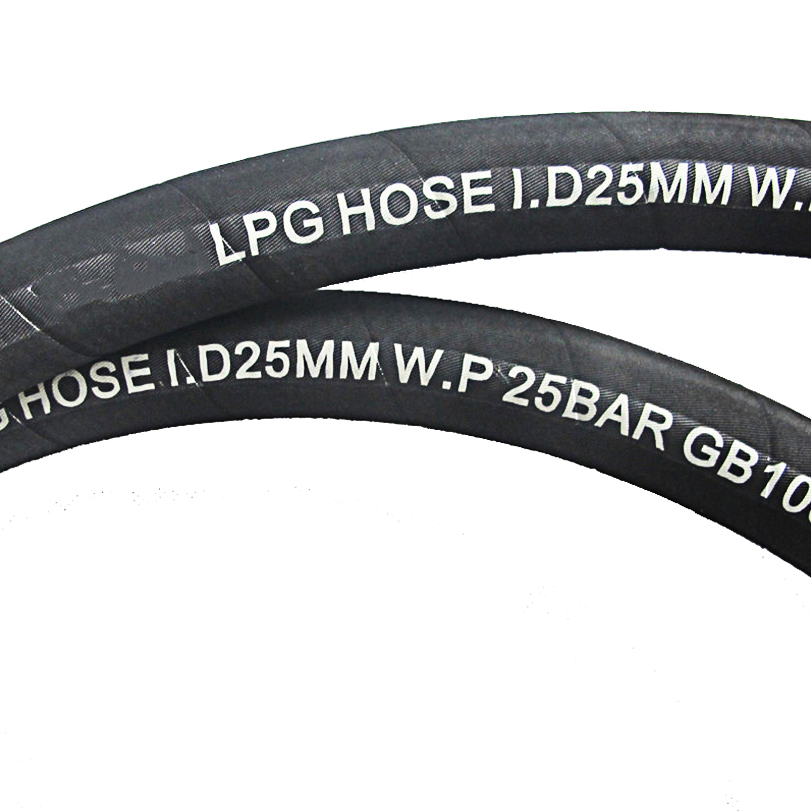335345435
Nov . 11, 2024 11:33 Back to list
braided pressure hose
The Importance and Applications of Braided Pressure Hose
In many industries, the integrity of fluid delivery systems is crucial to ensuring operations run smoothly and safely. One essential component of these systems is the braided pressure hose. Designed to withstand high pressure and provide flexibility, braided pressure hoses have become a standard choice for various applications across sectors such as automotive, aerospace, oil and gas, and manufacturing.
What is a Braided Pressure Hose?
A braided pressure hose is a type of flexible tubing that consists of an inner core, typically made from materials like rubber or thermoplastic, which is reinforced by a layer of woven or braided fibers. These fibers can be made from steel, polyester, or other durable materials that enhance the hose's tensile strength and resistance to wear. The braiding provides significant structural integrity, allowing the hose to handle increased internal pressures while maintaining its shape and flexibility.
Advantages of Braided Pressure Hoses
One of the primary advantages of braided pressure hoses is their ability to withstand high-pressure environments. The braided fibers distribute pressure evenly along the length of the hose, reducing the risk of bursting or leaking, which is crucial in applications where safety is paramount. Additionally, these hoses have excellent resistance to abrasion, chemicals, and temperature fluctuations, making them suitable for demanding environments.
Another notable benefit is the flexibility of braided pressure hoses. Unlike rigid piping, these hoses can bend and maneuver around obstacles, making installation easier and allowing for more versatile designs in equipment and machinery. This flexibility also contributes to reduced wear and tear, as the hoses can flex without putting too much strain on the fittings or connectors.
Applications of Braided Pressure Hoses
braided pressure hose

1. Automotive Industry Braided pressure hoses are widely used in vehicles for various fluids, including fuel, oil, and hydraulic systems. Their ability to handle high temperatures and pressures makes them ideal for high-performance applications, such as in racing cars and heavy-duty trucks.
2. Aerospace In the aerospace sector, reliability is crucial. Braided hoses are used in hydraulic systems to control landing gear, flaps, and other critical components of aircraft. Their high strength-to-weight ratio helps to maintain the efficiency and performance of aircraft.
3. Oil and Gas The exploration and extraction of oil and gas require robust and reliable equipment. Braided pressure hoses are used to transport drilling fluids and fuel, ensuring that these substances can be moved safely and efficiently under high pressures.
4. Manufacturing Many manufacturing processes involve the use of pressurized fluids, whether for cooling, lubrication, or transfer. Braided pressure hoses are often employed in these systems to maintain the flow of fluids while withstanding the demands of the production environment.
5. Food and Beverage Industry In the food and beverage industry, hygiene and safety are top priorities. Braided pressure hoses made from food-grade materials are utilized for transferring liquids, ensuring compliance with health standards while providing durability and flexibility.
Conclusion
As industries continue to evolve and demand more efficient and reliable fluid handling solutions, the role of braided pressure hoses will only grow. Their unique combination of strength, flexibility, and resistance to harsh conditions makes them indispensable in many applications. Whether in high-performance automotive systems or advanced aerospace technologies, braided pressure hoses are a critical component that helps ensure the safe and efficient operation of machinery across various sectors. Choosing the right braided pressure hose can enhance productivity and safety, ultimately contributing to the success of any operation. As technology advances, we can expect to see further innovations in hose materials and designs, making these vital components even more effective in the future.
-
SAE 100 R17 Black Smooth Cover Hydraulic Hose
NewsMar.07,2025
-
SAE 100 R17 Black Smooth Cover Hydraulic Hose
NewsMar.07,2025
-
SAE 100 R17 Black Smooth Cover Hydraulic Hose
NewsMar.07,2025
-
SAE 100 R17 Black Smooth Cover Hydraulic Hose
NewsMar.07,2025
-
SAE 100 R17 Black Smooth Cover Hydraulic Hose
NewsMar.07,2025
-
steel wire braided hydraulic hose
NewsMar.07,2025



